
There are several stunningly beautiful locations around the world that are so colorful they look like a paint bucket has been splashed all over it. However this is just natural beauty at its finest. From flower fields to parks, there are a whole host of colorful places that will make you think you've walked into a postcard, but they genuinely do exist. The next time you're deciding on a destination to visit, consider adding a splash of color to your vacation and visiting one of the top 30 most colorful places on Earth.
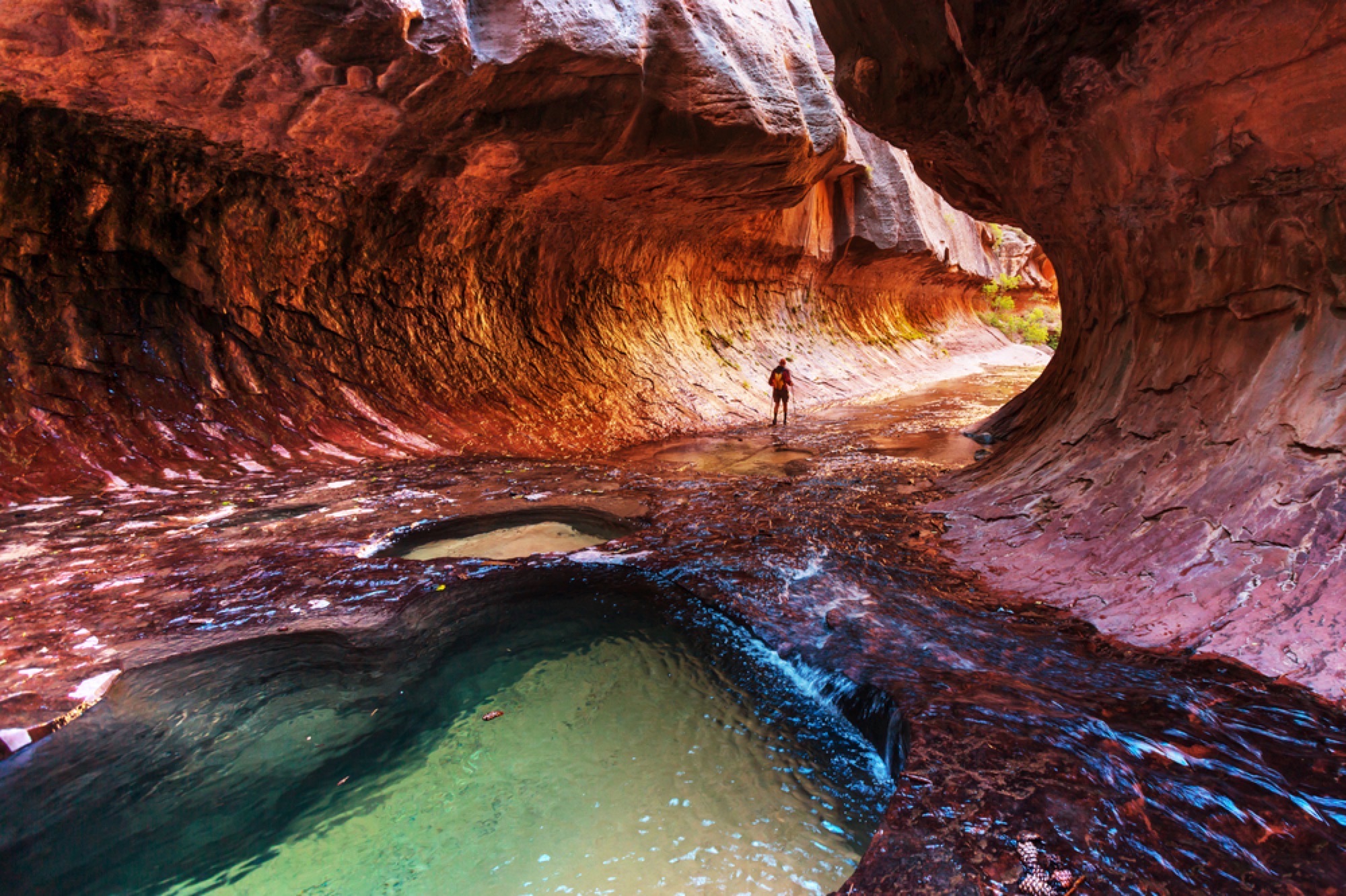
Narrows in Zion National Park, Utah
During Spring, areas of the Netherlands are transformed into a sea of color due to the blooming of several tulips. The tulips reside in many different fields, and the most well known tulip farms are located in the Northeast polder in the province of Flevoland, The Kop van Noord-Holland area and the Bollenstreek near Leiden. The fields grow many varieties of tulip, meaning no two fields are alike, but they are all equally colorful.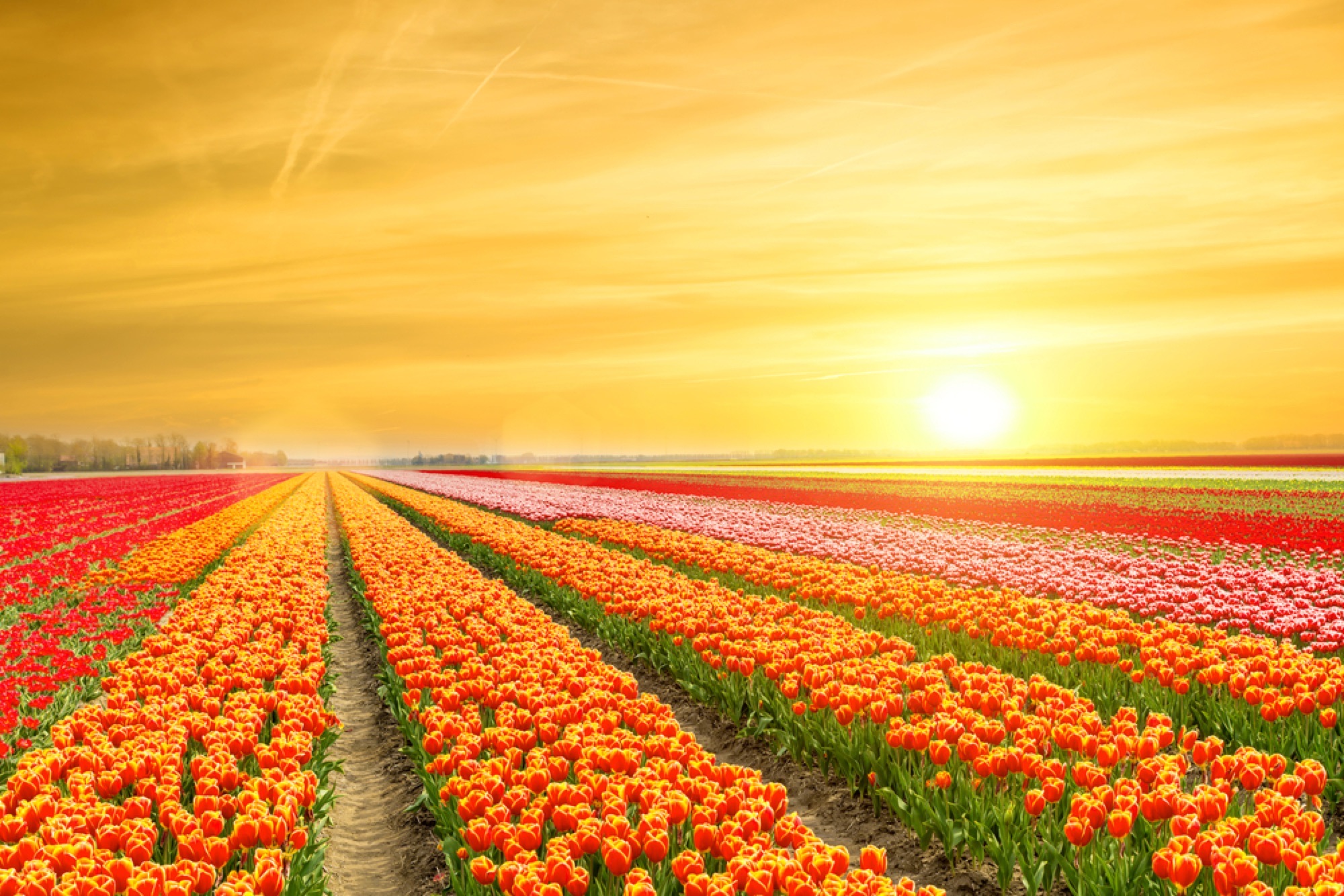
Luoping County in China is at its most beautiful in the spring, when its fields of yellow canola flowers bloom, creating a sea of golden color. The fields attract a lot of photographers who visit to capture the flowers during their peak blooming time. It is also popular with bees, and during the spring time beekeepers set up base tents in the fields so they can keep bees and harvest the honey.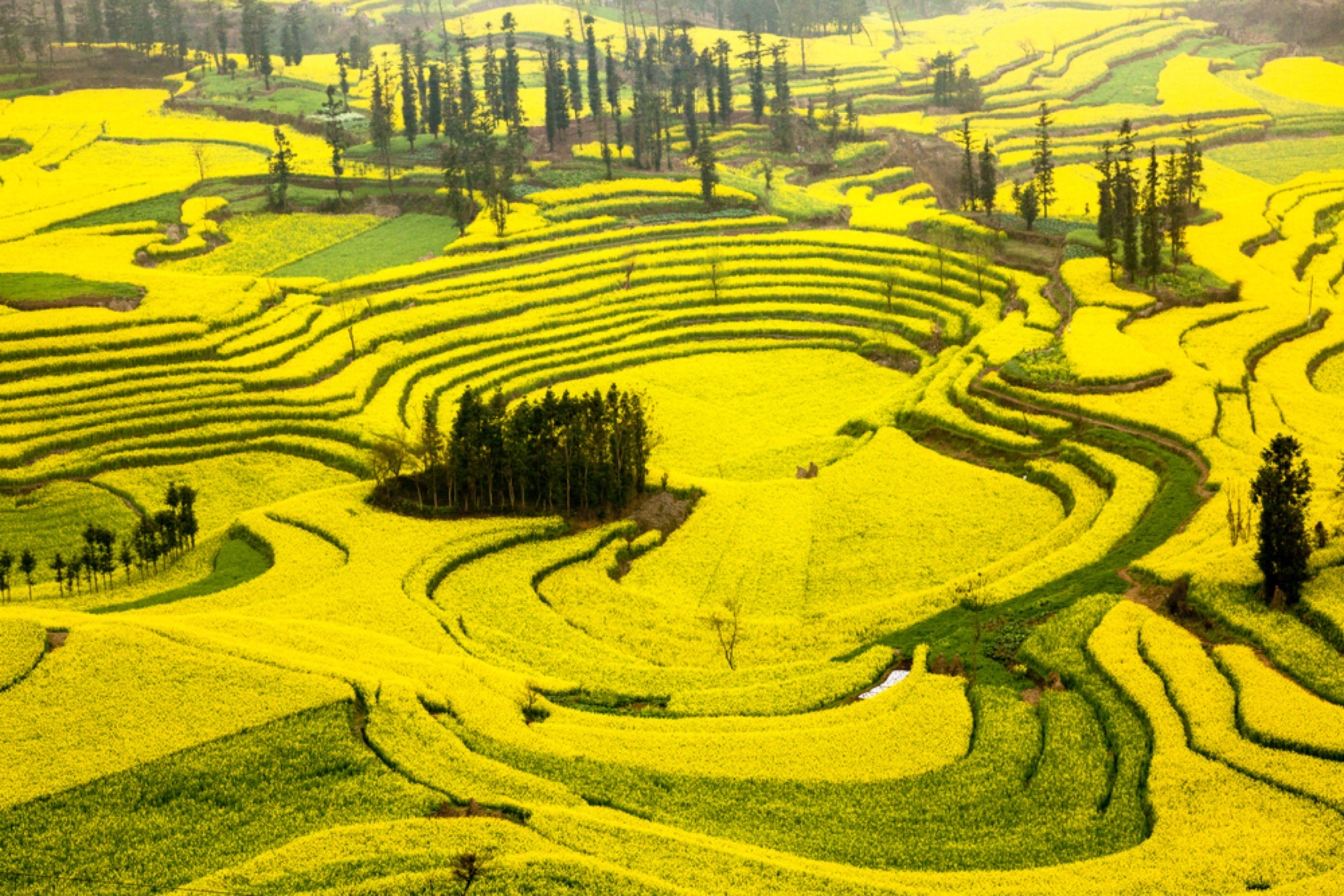
The Kawachi Fuji Gardens in Kitakyushu, Japan, is home to 150 mesmerizing Wisteria flowering plants that are of 20 different species. The Wisteria tunnel is a surreal candy colored wonderland of white, blue, purple, pink and violet-blue wisterias, and is an experience that is best enjoyed from late April to mid May. If you visit any other time you will be faced with lifeless twisted branches, which can be disheartening.
This national park is situated along the western Himalayas and is well known for its endless meadows of vibrant alpine flowers and variety of flora. It is also home to several endangered species of animals such as the Asiatic black bear, snow leopard and musk deer.
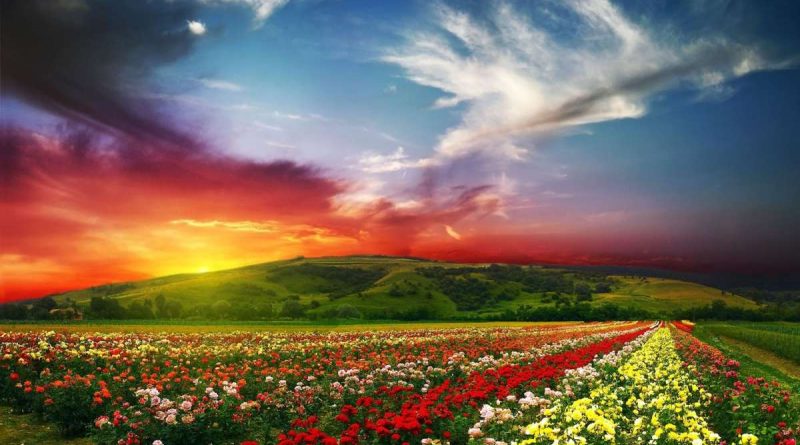
Lake Hillier features in our list of the most colorful places on Earth because of its bright bubblegum pink color. The color is caused by green micro-algae and red halophilic bacteria, both of which contribute to the vivid pink hue. Though these organisms may sound harrowing, they are not known to cause any harm to humans - making Lake Hillier a top tourism hotspot!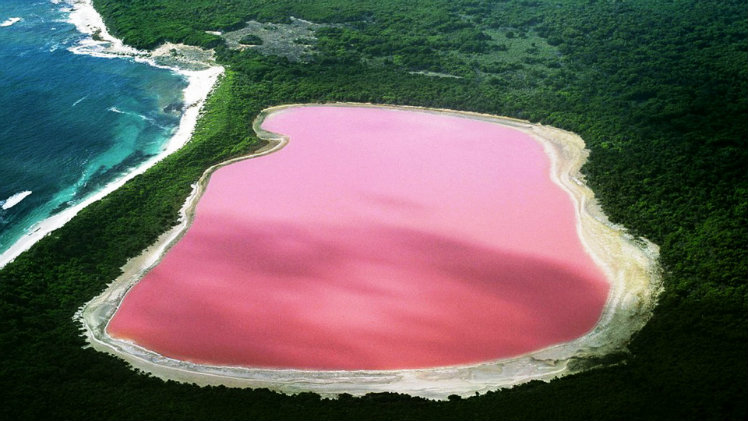
There are 118 lakes in the Jiuzhaigou Nature Reserve, but the Five Flower Lake is one of most beautiful amongst them. This shallow lake is a beautiful multitude of color, which is caused by surrounding mineral deposits and diverse plant life.
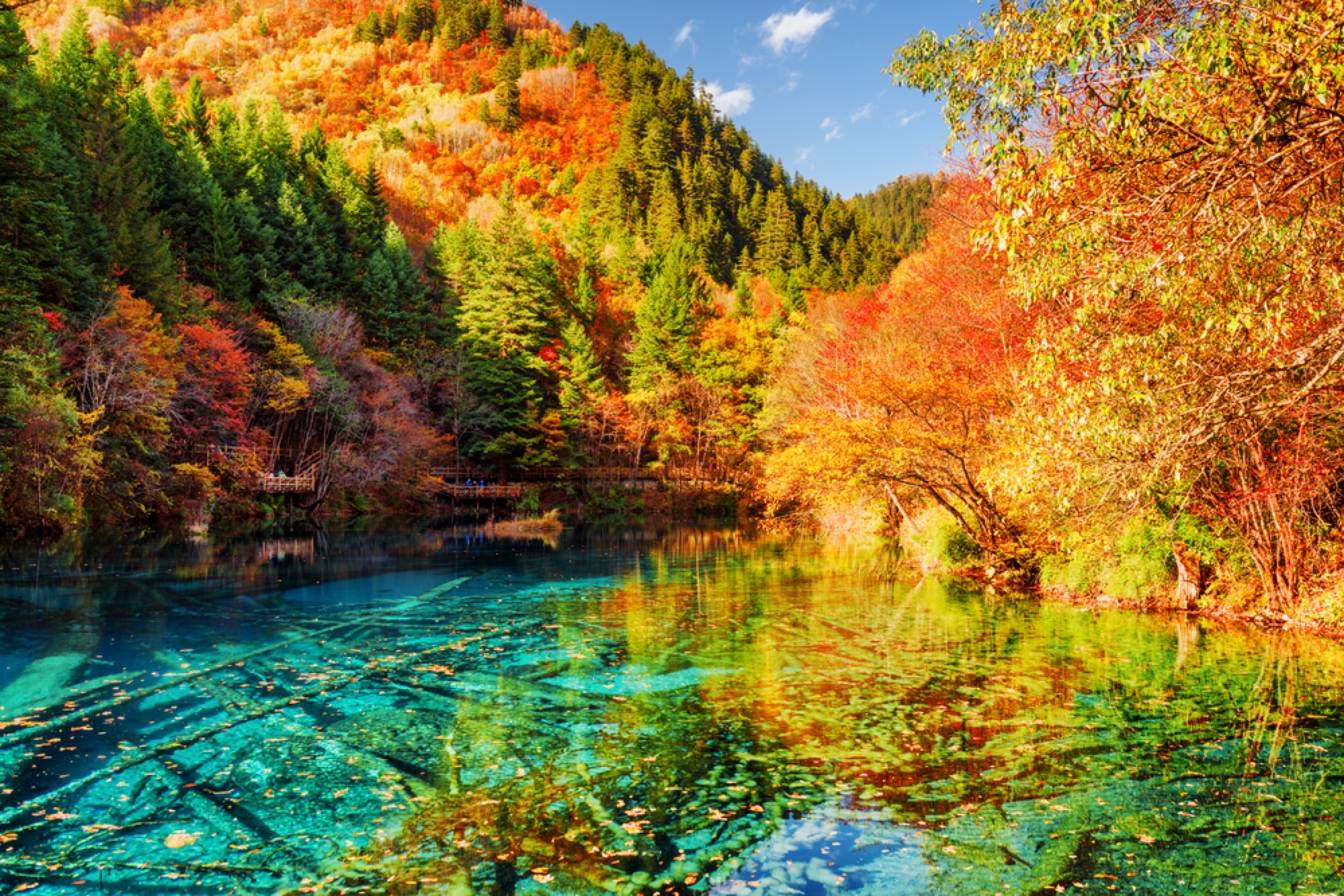
This county is famous for its mountains which have been cultivated into terraced rice paddies and provide a spectacular abstract pattern of color. The best time to visit and appreciate its beauty is after the harvest from January to March.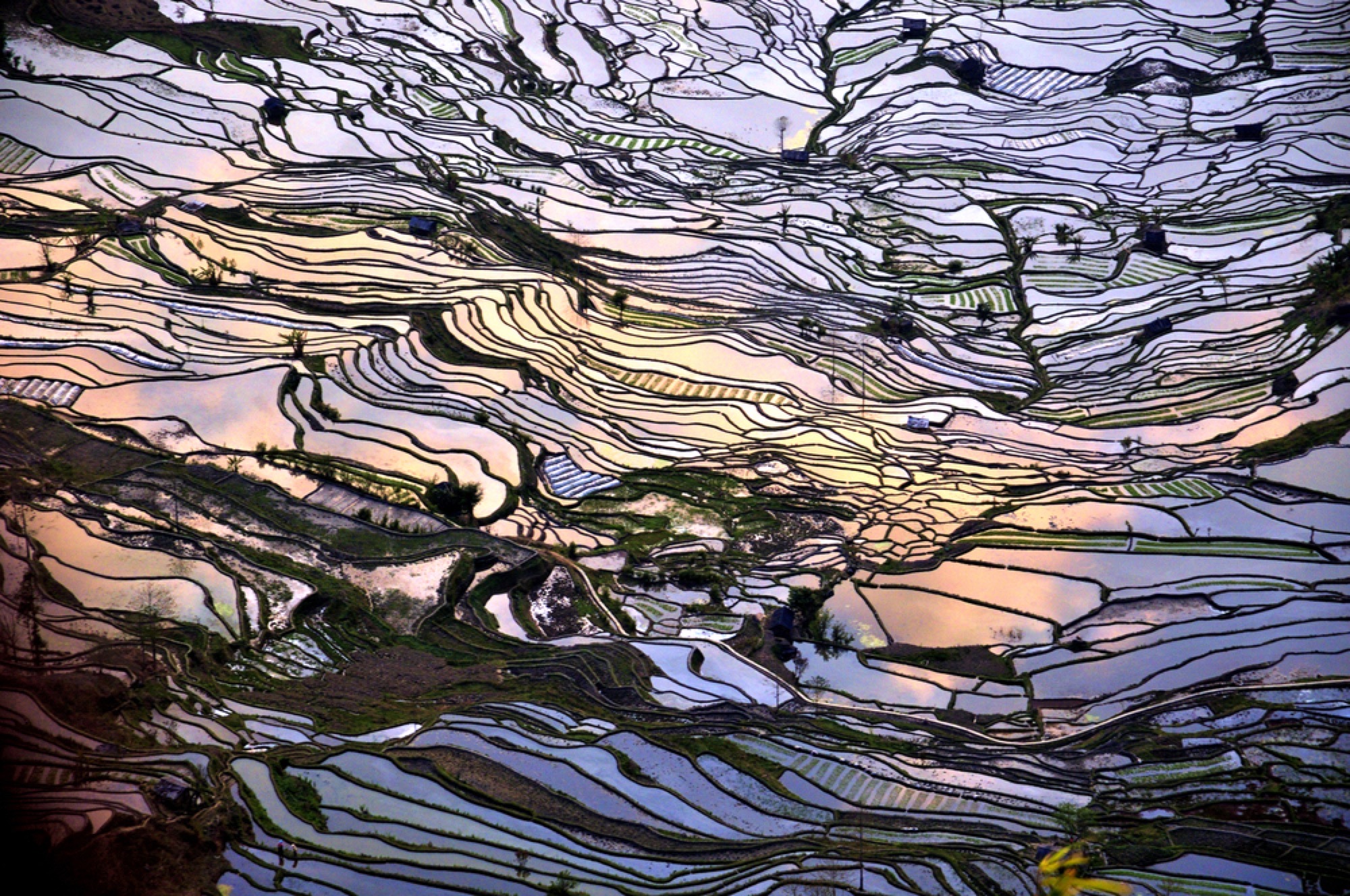
The highly alkaline soil in this area means not many types of plants can survive this type of environment, however the bright red suaeda plants flourish. They start their growth cycle in April and are usually light red in color before they mature into a deep red.
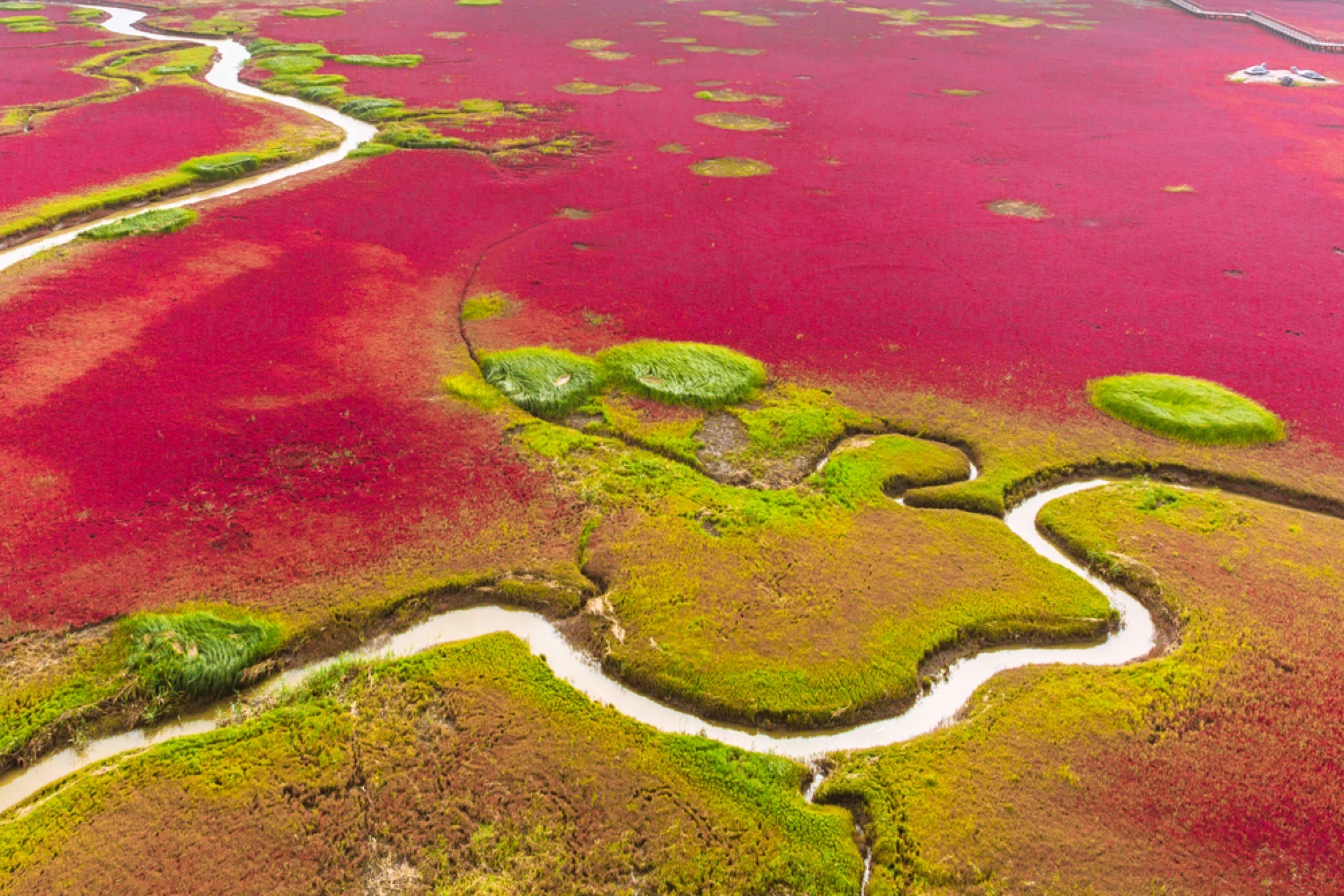
In the Spring this area is really popular with locals and tourists, as Namaqualand transforms from an arid, barren landscape into a picturesque rainbow of colorful flowers.
The rainbow of flowers in Japan are all neatly planted so they are grouped together in colors and provide a spectacular experience for flower lovers. The bright assortment of colors are from a variety of flowers including french marigolds, poppies, sunflowers and lupin.
Shark Bay has exceptional natural features, making it a must-see if you ever visit Australia. The sandy white beaches, red cliffs, and beautiful blue water is captivating beyond belief, it's no wonder this area is a world heritage site.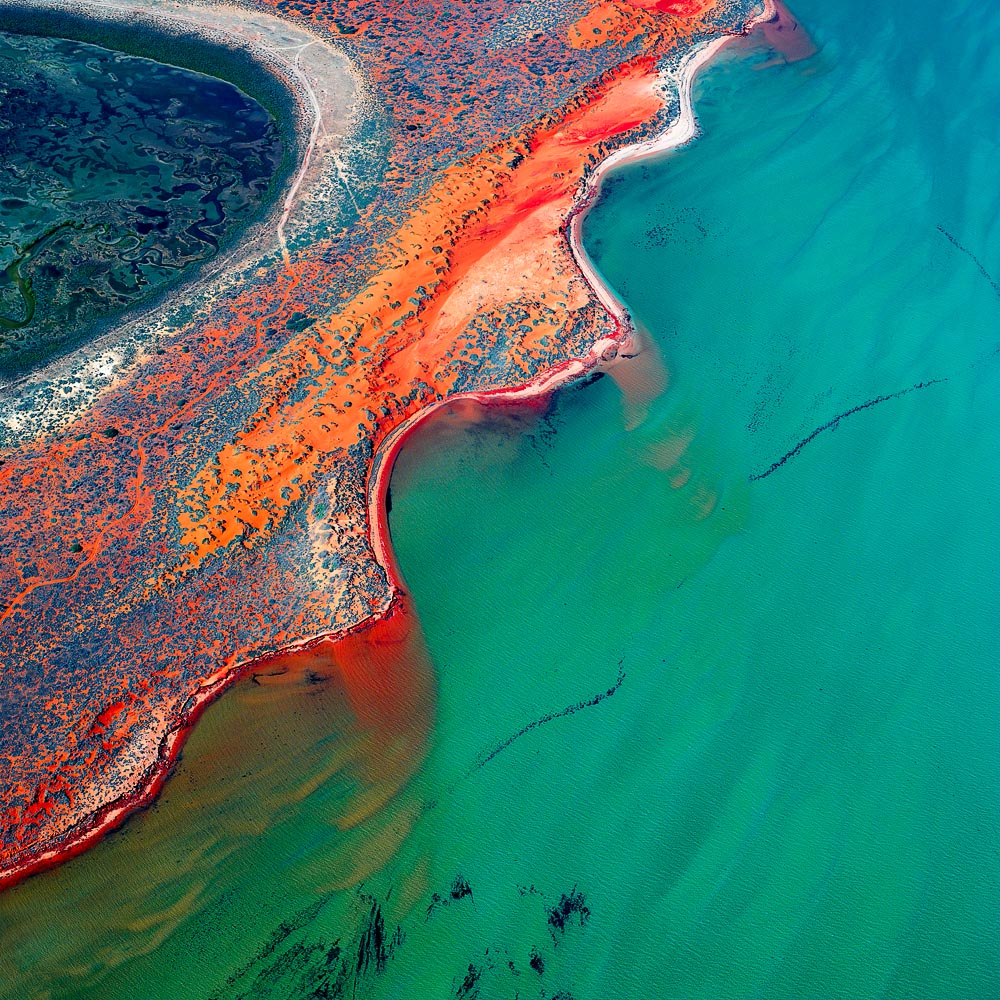
The Great Barrier Reef is also worth seeing in Australia. It is home to over 1500 species of fish and 600 types of coral, making it one of the most colorful places on earth, and a great location for diving.
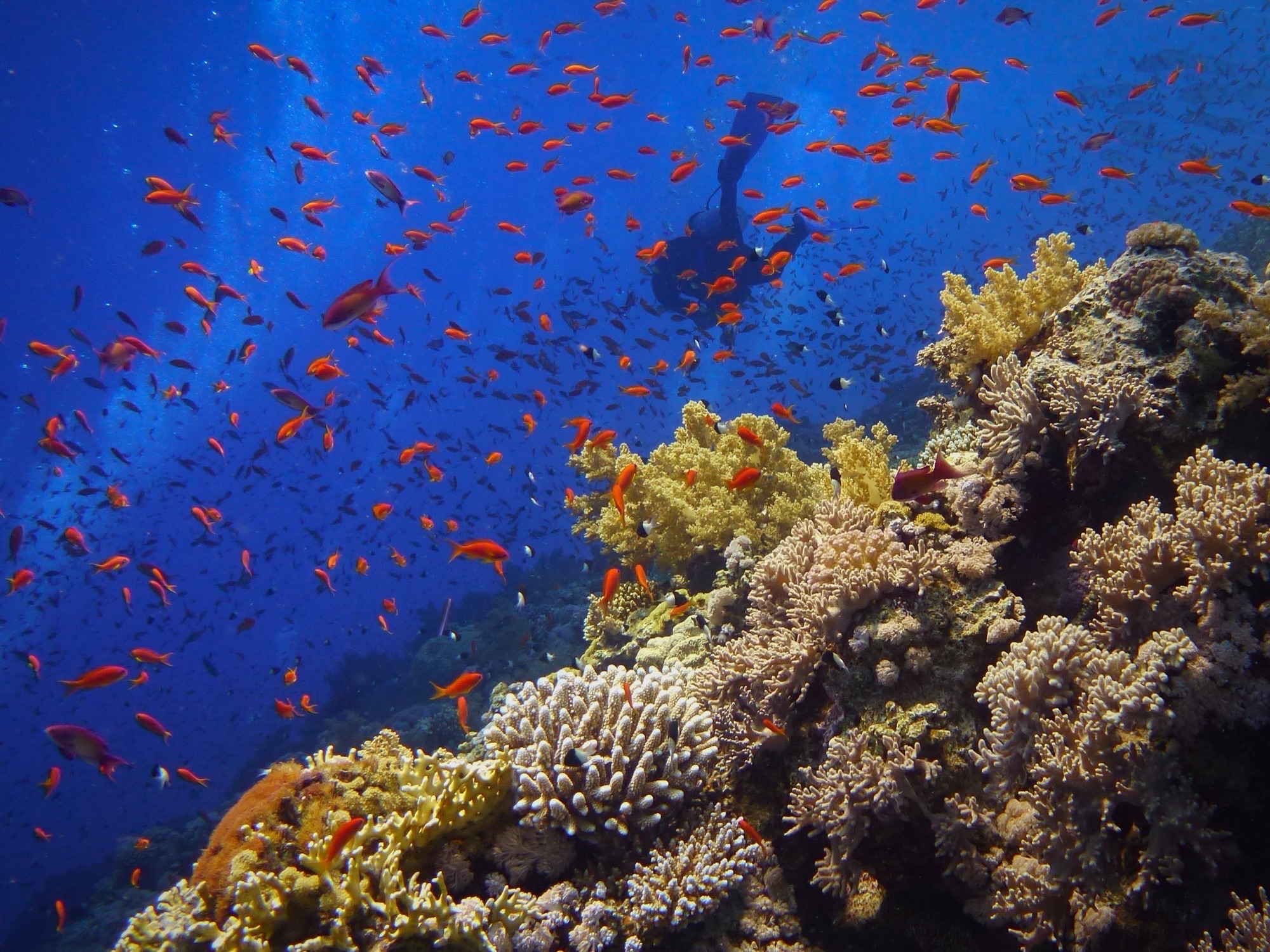
There are several different hot springs around the world that you can visit, but the Grand Prismatic Hot Spring located in Yellowstone National park, is the most colorful of them all.
Another hot springs attraction is in Pamukkale, Turkey. These gorgeous pools of blue have been bathed in for thousands of years and are believed to bring a calming effect to those who visit them.
The ice caves in Juneau, Alaska, are a truly magical experience, but due to climate change they not be around much longer. The 12-mile-long glacier provides breathtaking views and lets you witness every stage of the water cycle at once.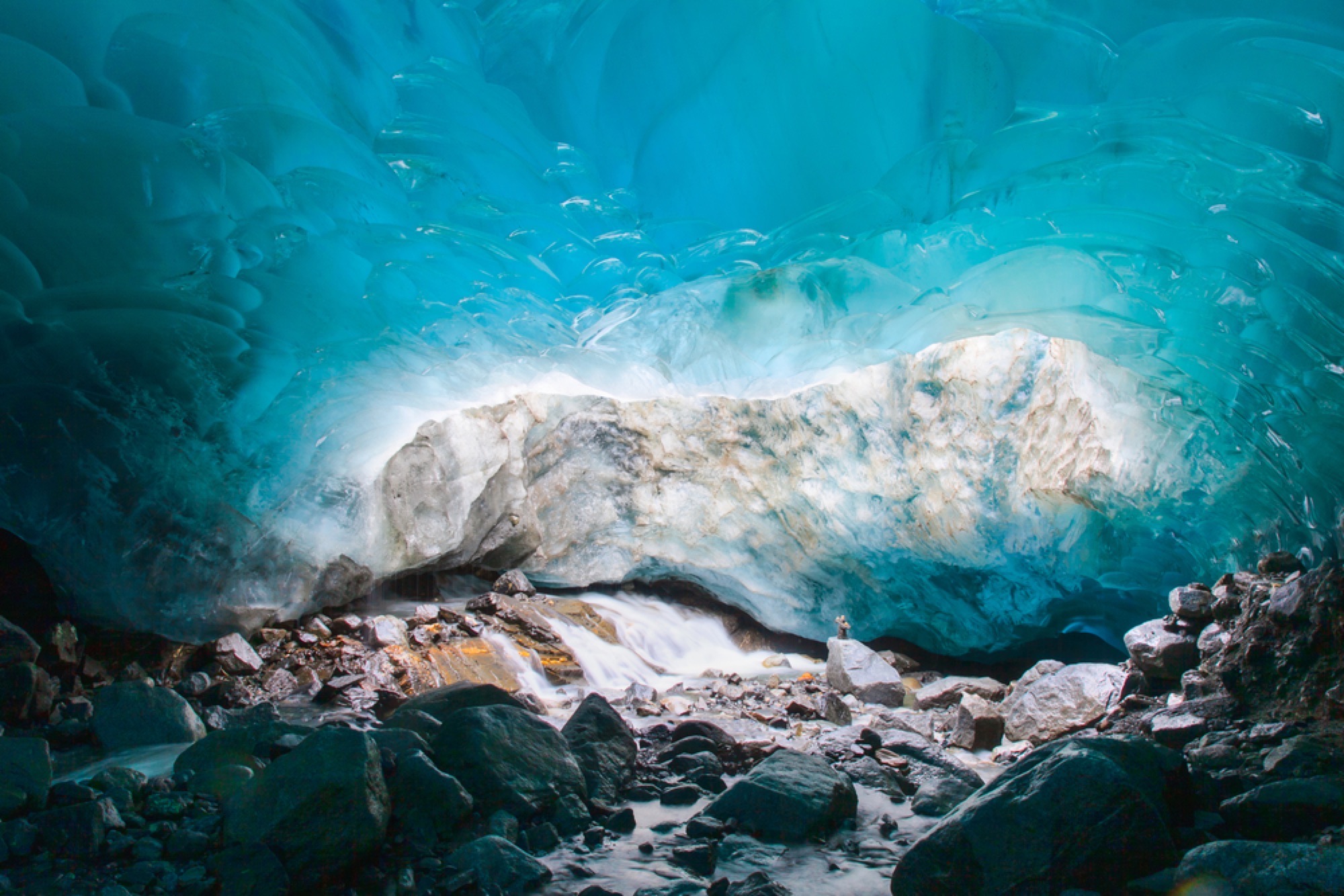
If you visit the base of Mount Fuji in spring you will see it surrounded by hundreds of thousands of moss blooms, also known as 'shibazakura' in various shades of pink. This makes it a beautiful sight seeing spot if you are ever in Chichibu in Japan.
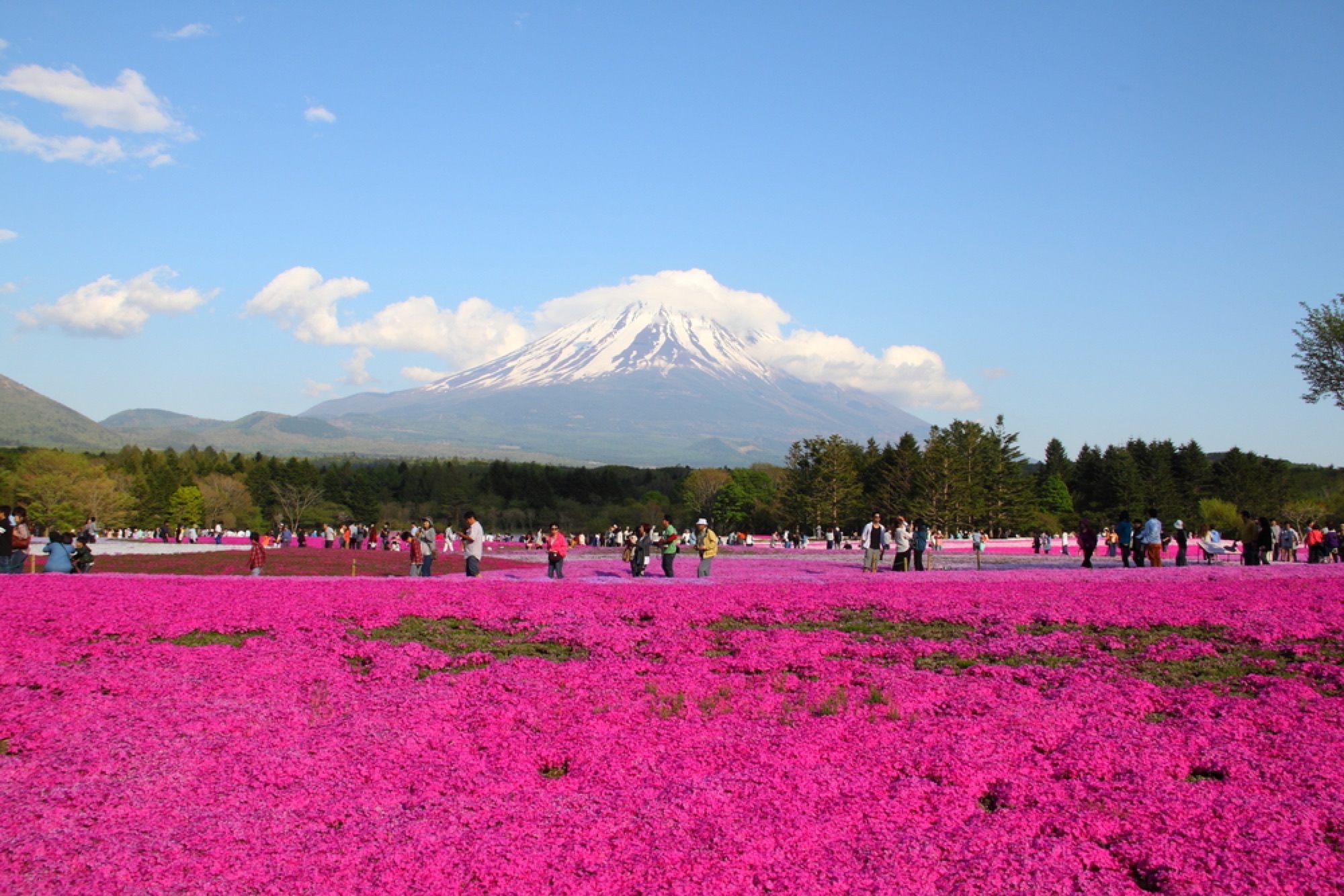
This salt and soda lake is inhospitable for most flora and fauna, but salt-loving microorganisms like cyanobacteria thrive in it, and they cause the stunning deep red and orange colors of the lake by living there.
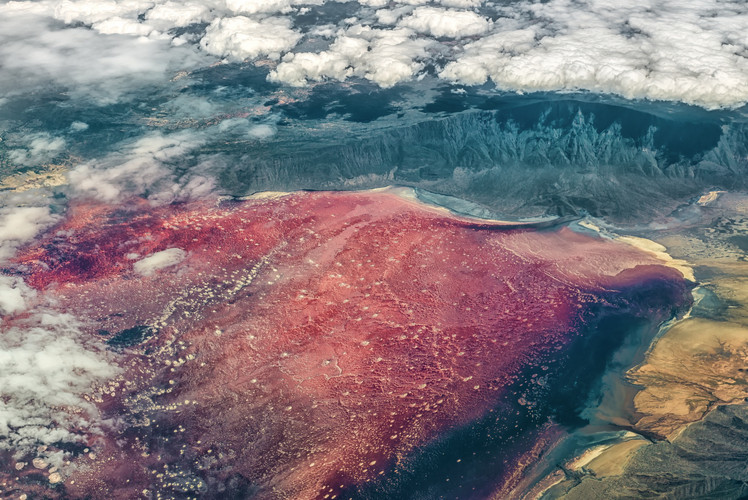
Cornwall is a beautiful county in England which encompasses several glorious sandy beaches and calm blue waters, but they also feature stunning fields of poppies just like this one in Newquay, making it one of the most colorful places on earth.
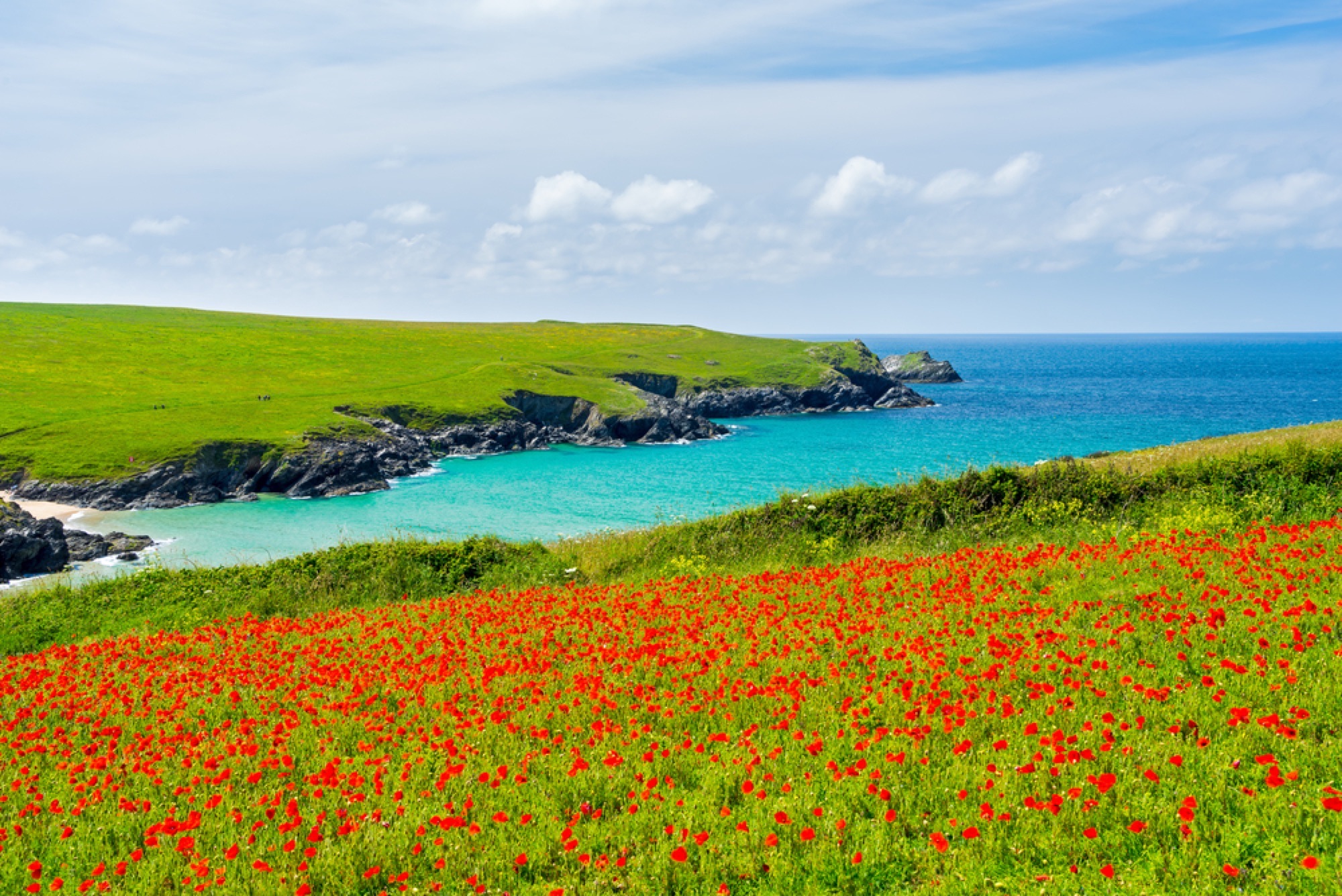
No discussion of color would be complete without a mention of Monet’s horticultural efforts at Givenchy. Some may even consider this idyll his masterpiece, as he used complementary color schemes to the max. The strident planting plans sing, meaning this great Impressionist’s garden makes a great impression. Visit this vibrant oasis for a masterclass in the use of hues.
The Aurora Borealis is surely the most spectacular (and colorful) natural phenomenon on Earth. It’s been described as a “celestial lightshow”, which seems apt for an event that takes place 93 million miles away from Earth. For a mysterious and mesmerizing experience, begin your quest to find the elusive Northern Lights and see the sky blaze with color.
Step into the upland hay meadows around the village of Muker and discover the beauty of wild flowers in the Dales. These scarce flowers are delicate, exquisite and ephemeral, which makes them all the more special. Time your visit with care, as the short lived nature of their flowering means you’ll usually only see them between late May and early July.
Immerse yourself in this striking natural spectacle encompassing a white sandy beach, with a subtle pink hue created by broken seashells, lying beside the azure sea. You’ll see rare flora and fauna on this majestic beach, which has been voted the best in Greece – no wonder it’s been called “Heaven on Earth”. Make it your next seaside escape.
Visit this botanic garden to enjoy the jewel-like flowers that exist above the treeline of the Swiss alps. Enjoy breathtaking views of the Eiger, Mönch and Jungfrau, while you stroll around the grounds enjoying these treasured flowers in their natural habitat. The entrance is close to the summit station of the Schynige Platte Railway, and the gardens are usually open from late May until mid October. A treasure trove of floral delights awaits you.
Just an hour’s journey from the capital of Senegal, you’ll find this arresting pink lake, named “Lac Rose” by the locals. The curious color is the result of a pigment produced by bacteria - Dunaliella salina - that lives in the lake. To see this remarkable sight at its best, you need to visit between November and June.
Heather adorns several million acres of Scottish moorlands, hills and glens, so you’ll find no shortage of places to this see this much-loved flower. It’s usually a purple hue, but you may come across the rarer white flowering species too. July and August are the most likely times to see this iconic plant in flower, though this may vary depending on the species, location and conditions.
Sunflowers are synonymous with Tuscany; you can spy field after field of these bright flowers throughout the region, in Massa Marittima, Val d'Orcia, Chianti and many more areas besides. Visit from late June and throughout July to see these majestic flowers at their brightest. No sight is more uplifting than a field full of these sunny blooms - a real floral fantasia.
Discover a dramatic combination of distinctive rock formations and colorful stone, in this beautiful yet harsh environment. Depending on the weather conditions and time of day, you’ll find that this extraordinary landscape changes from lilac to pink and from red to gray. With striking bands of color visible on the stone, it’s an unforgettable environment that will surprise and amaze you.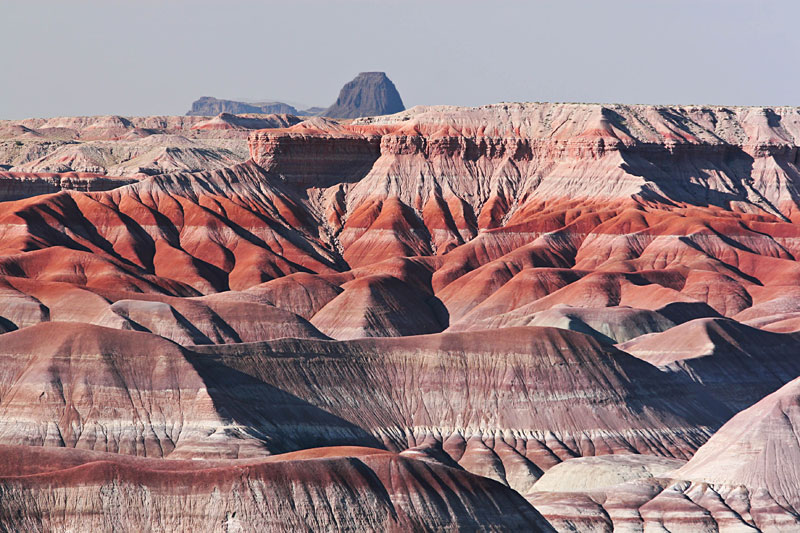 Source
Source
Explore the Lake District National Park in late March and April to see this cheerful flower in its natural setting. Although you’ll find daffodils in numerous locations, the most famous spot is the shoreline of Ullswater, where Wordsworth wrote his renowned poem. Tread in the footsteps of poets, authors and artists when you visit this inspiring landscape, and perhaps you’ll feel the creative spark too.
The lavender fields in Provence are best enjoyed in the summer when the flowers are in full bloom. The purple will mesmerize you while the fragrance is overwhelming.
This Colombian river is known as 'The River of Five Colors', because of the range of striking colors it turns from the end of July through to November. The bed of the river becomes blue, yellow, green and black, but especially red, due to a flourishing red plant species called Macarenia clavígera, which is found at the bottom of the river.